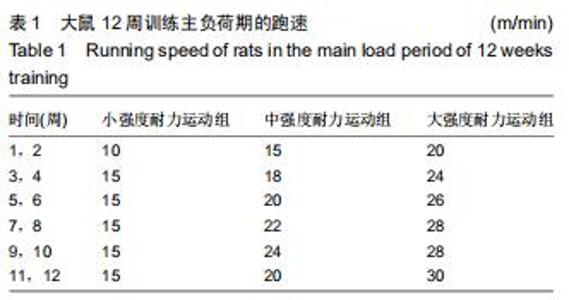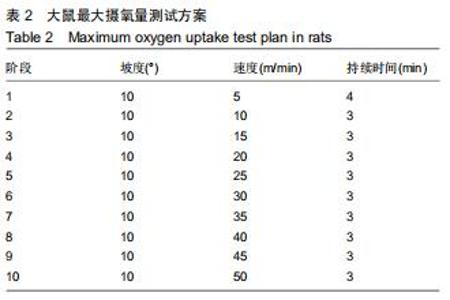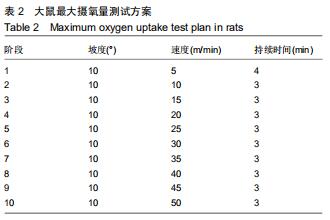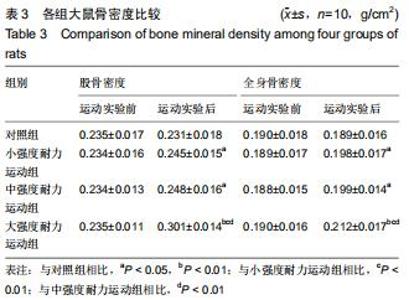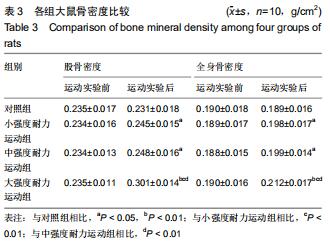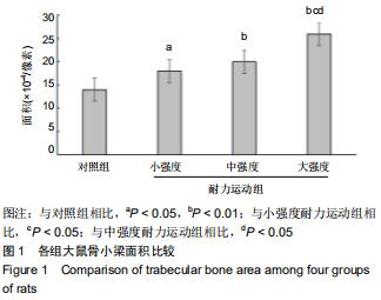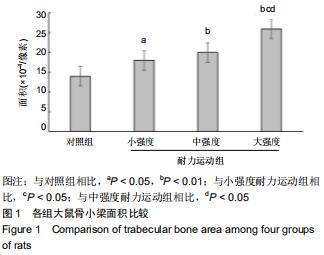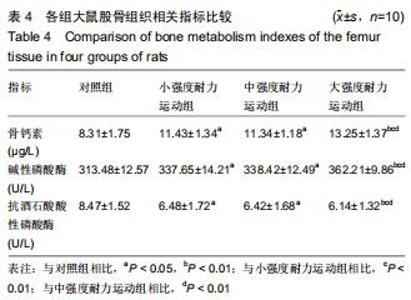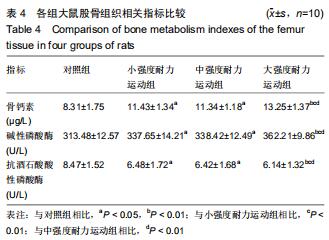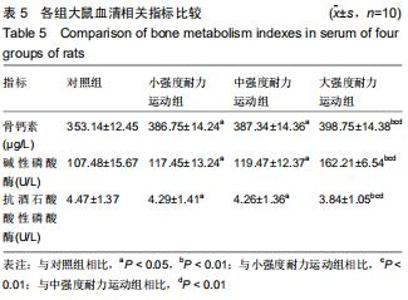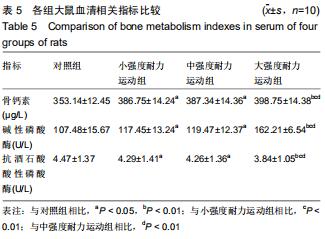|
[1] 姚亚娟,朱琳.粤北农村贫困山区7-16岁学生骨强度发育状况[J].中国学校卫生,2017,38(8):1165-1167+1171.
[2] 张元宇,魏亚男,安康,等.DON毒素与氟对骨生长发育因子的影响及茶的拮抗作用[J].中国地方病防治杂志,2017,32(4): 361-363.
[3] 杨华,栗敏,郭勇.北京地区中老年人FRAX骨折风险评估与BMD、骨代谢相关生化指标间的相关回归研究[J].中国骨质疏松杂志, 2019,25(11):1526-1532+1541.
[4] 余雪莲,杜光红,钟海花.长期华法林治疗对骨代谢指标及骨密度的影响[J].中国骨质疏松杂志,2019,25(12):1782-1786.
[5] SHEPHERD RE, GOLLNICK PD. Oxygen uptake of rats at different work intensities. Pflugers Arch. 1976;362(3): 219-222.
[6] LEVINE BD. VO2max: what do we know, and what do we still need to know? J Physiol. 2008;586(1):25-34.
[7] LEANDRO CG, LEVADA AC, HIRABARA SM, et al. A program of moderate physical training for Wistar rats based on maximal oxygen consumption. J Strength Cond Res. 2007; 21(3):751-756.
[8] 李水生,左建玲,杨新林,等.运动联合早期中药治疗对去卵巢骨质疏松大鼠的干预作用[J].动物医学进展,2018,39(11):88-92.
[9] 路瑛丽,荆文,冯连世,等.低氧训练对肥胖大鼠骨代谢的影响[J].中国体育科技,2018,54(5):88-93.
[10] ITO M, NAKAULURA T, IKEDA S, et al. Efects of lifetime voleyball exercise onbone mi neral densities in lumbar spine.calcaneus an dtibia for pre.andpostmenopansal women. Osteoporos Int. 2001;12:104-111.
[11] FROSTT HM. On our age-related bone loss: Insights from a new paradigm. J Bone Miner Res. 1997;12(10): 1539-1546.
[12] 原恺,李爱玲,韩克光,等.羊骨胶原肽对去卵巢大鼠的骨质改善作用[J].山西农业大学学报(自然科学版),2019,39(1):102-106.
[13] 魏鹏翔,杨洋,段银银,等.奥美拉唑对去势大鼠骨密度和骨代谢的影响[J].中国医院药学杂志,2019,39(17):1741-1745.
[14] 王媛媛,葸慧荣,石文贵,等.低频脉冲电磁场对大鼠成骨细胞骨形成的影响及作用机制[J].中国医学科学院学报,2019,41(1): 21-27.
[15] 李寿邦,阮凌.运动和魔芋多糖对改善2型糖尿病大鼠糖脂异常及骨代谢的机制研究[J].首都体育学院学报,2019,31(6):484-489.
[16] JOO YI, SONE T, FUKUNAGA M, et al. Effect of endurance on the three-dimensional trabecular bone microarchitecture in young growing rats. Bone. 2003;33:485-493.
[17] PIRES-OLIVEIRA DA, OLIVEIRA RF, AMADEI SU, et al. Laser 904 nm action on bone repair in rats with osteoporosis. Osteoporos Int. 2010;21(12):2109-2114.
[18] 周延峰,李雪雁,李文苑,等.1.8mT不同频率正弦交变电磁场对青年大鼠骨密度及骨形态计量的影响比较[J].生物工程学报,2017, 33(7):1158-1167.
[19] 覃荣周,谢江涛.电刺激与运动联合干预绝经后骨质疏松模型大鼠骨代谢及血清学指标的改变[J].中国组织工程研究,2012, 16(7):1153-1156.
[20] JOHNSON P. Antioxidant enzyme expression in health and disease: effects of exercise and hypertension. Comp Biochem Physiol C Toxicol Pharmacol. 2002;133(4):493-505.
[21] RUBIN CT, SOMMERFELDT DW, JUDEX S, et al. Inhabitation of osteopenia by low magnitude high frequence mechanical stimuli. Drug Discov Today. 2001;6(16):233- 235.
[22] 陈一冰.运动对大鼠骨细胞凋亡及IGF-I表达的影响[J].中国运动医学杂志,2003,22(4):418-419.
[23] 马涛,苏红燕.补充水解胶原蛋白与跑台运动联合作用对生长期大鼠骨密度和组织形态计量学指标的影响[J].山东体育学院学报,2016,32(4):77-84.
[24] 王一钦,罗晓林,谭栩颖,等.sn-2棕榈酸酯对低钙诱导低骨密度大鼠钙代谢及骨量的影响[J].营养学报,2017,39(2):134-138.
[25] 高丽.运动性动情周期抑制雌性大鼠的骨变化及其影响机制的研究[D].上海:华东师范大学,2005.
[26] 赵常红,李世昌,孙朋.不同运动对生长期大鼠Wnt/β-catenin信号及软骨内成骨的影响[J].天津体育学院学报,2019,34(3): 238-242+263.
[27] 马涛,贾磊,苏红燕.运动对废用性骨质疏松大鼠破骨细胞分化JNK/AP-1信号通路的影响[J].西安体育学院学报,2017,34(5): 599-606+640.
[28] 葸慧荣,高玉海,杨芳芳,等.白藜芦醇对生长期大鼠峰值骨量的影响[J].浙江大学学报(医学版), 2017,46(6):578-584.
|
